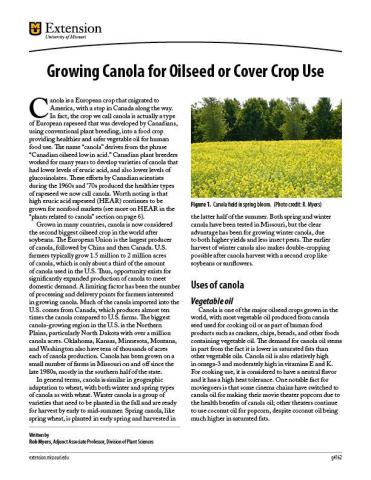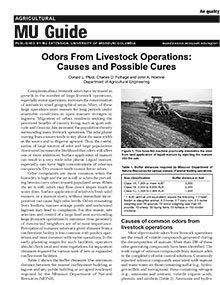


Calibration of Lagoon Irrigating Equipment
Reviewed
This publication provides guidelines for calibrating lagoon irrigation systems to ensure efficient nutrient application and prevent runoff.

Missouri Weed Seeds, Page 46
Reviewed
Urticaceae (Nettle family) is a relatively small family of plants with only five genera occurring in Missouri, but one of its members, Laportea canadensis or wood nettle, is a common nuisance plant because of its stinging hairs.
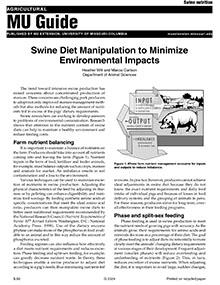

Missouri Weed Seeds, Page 14
Reviewed
Other than hops, Cannabaceae (Mulberry family) includes mulberry, Osage orange and hemp.

Missouri Weed Seeds, Page 49
Reviewed
Zygophyllaceae (Caltrop family), a relatively small plant family, has about 30 members, but only two actually occur in Missouri. Of these two, puncturevine is the more common.

Antibiotics and Other Additives for Swine: Food Safety Considerations
Reviewed
Learn about antibiotics and additives in swine production, their benefits for growth and feed efficiency, and best practices for safe and effective use.
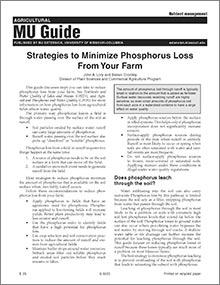
Strategies to Minimize Phosphorus Loss From Your Farm
Reviewed
This guide discusses steps you can take to reduce phosphorus loss from your farm.

Missouri Weed Seeds, Page 17
Reviewed
At least 14 species of “chickweed” and several species of sleepy catchfly make up the majority of Caryophyllaceae (Pink family) in Missouri.
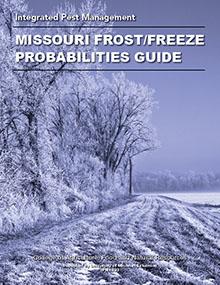
Missouri Frost/Freeze Probabilities Guide
Reviewed
Where in Missouri you live can make a big difference on when to expect your first or last frost. See this guide for probabilities based on past years.

Care of Pigs From Farrowing to Weaning
Reviewed
The most critical period in the life cycle of a pig is from birth to weaning. Visit our website to learn about the Care of Pigs From Farrowing to Weaning.
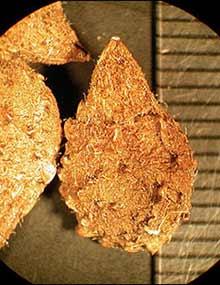
Missouri Weed Seeds, Page 20
Reviewed
Cucurbitaceae (Gourd family): Cucurbits include cultivated plants, such as gourd, squash and cucumber.
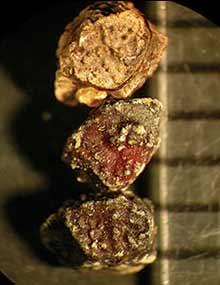
Missouri Weed Seeds, Page 23
Reviewed
Most of the plants from Euphorbiaceae (Spurge family) present in Missouri are spurges, which include about 20 different species.
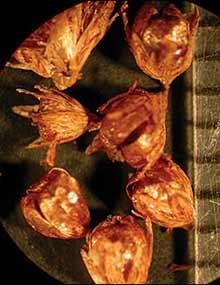
Missouri Weed Seeds, Page 26
Reviewed
More than 20 species of Juncaceae (Rush family) occur in Missouri. Rushes are not true grasses or sedges. Determining individual species of rushes by plant characteristics is nearly impossible.

Swine Management Check Sheet
Reviewed
This publication highlights some of the major swine management techniques producers should periodically check.
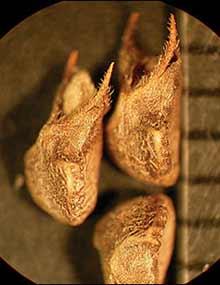
Missouri Weed Seeds, Page 29
Reviewed
Several species of Malvaceae (Mallow family) are among the most common broadleaf weeds in Missouri. These include velvetleaf and prickly sida. Cotton is also a member of this family.

Composting Dead Swine
Reviewed
Teng Teeh Lim
Extension Agricultural Engineer, Food Systems and Bioengineering
Joseph Zulovich
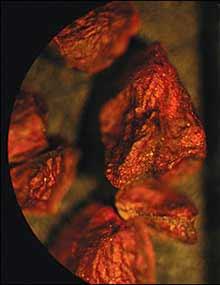
Missouri Weed Seeds, Page 32
Reviewed
Primrose is a common member of Onagraceae (Evening primrose family) with approximately 14 different species present in Missouri.
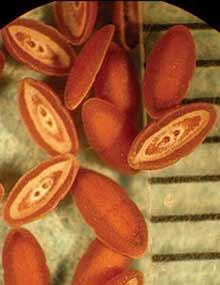
Missouri Weed Seeds, Page 35
Reviewed
Plantaginaceae (Plantain family), known collectively as plantains, has about 11 species in the state.

Missouri Weed Seeds, Page 03
Reviewed
Aizoaceae is a small family of plants. Other than carpetweed, only two species of plants in this family are known to occur in relatively isolated locations in Missouri.
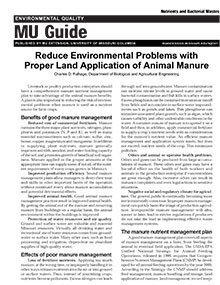
Reduce Environmental Problems With Proper Land Application of Animal Manure
Reviewed
Livestock or poultry production enterprises should have a comprehensive manure nutrient management plan to take advantage of the animal manure benefits. A plan is also important in reducing the risk of environmental problems when manure is used as a nutrient source for farm crops.

Missouri Weed Seeds, Page 38
Reviewed
Of 20 genera known within Portulacaceae (Purslane famiy), there are only three present in the state. Purslane is the most common among them.

Calibrating Manure Spreaders
Reviewed
Land application is the primary means of using livestock wastes in Missouri. Properly spreading manure on cropland is an environmentally acceptable means of managing wastes and, at the same time, realizing a benefit from the manure's fertilizer value.
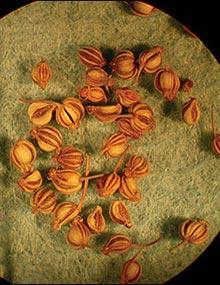
Missouri Weed Seeds, Page 06
Reviewed
Apiaceae (Carron family), also known as the parsley family, is a large family that includes several herbal plants, such as caraway, dill and fennel. It also contains several toxic plants, such as poison hemlock and water hemlock.
